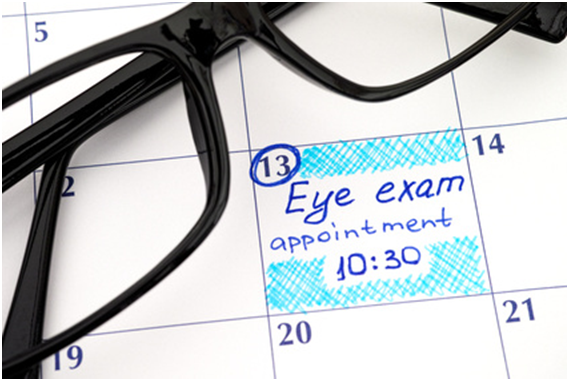Your Eye Exam – What To Expect

We all know the importance of maintaining regular eye exams, but have you ever wondered what the optometrist is checking and looking for? If you are about to have your first eye exam, then below we explain what you should expect during your 30 to 40-minute eye appointment.

Your optometrist will firstly ask you about your general health and your medical history. If you are having any vision problems, such as unclear or blurred vision, now is the time to say so. Once these initial questions are out of the way, the eye exam can begin. The exam process checks your vision, the health of your eye and function.
This test is all about checking the muscles of the eye which are responsible for movement. This is the test where you are asked to follow an object ‘up and down’, then ‘left and right’. This checks for any weakness or lack of coordination.
Visual acuity simply refers to how clearly you see an image. This is best done via the large alphabet chart that is usually projected onto a white screen, the chart is known as the Snellen chart. The type starts as large text at the top and gradually reduces in size, the further you look down. You will be asked to read out the letters. Both eyes are checked separately.
This rest is all about how light is perceived by the eye. Light waves enter your eye via the lens and cornea. If there are problems associated with the lens or cornea, then this will mean that your eye has what is known as a refractive error. This may mean that you need corrective lenses or minor surgery. The test is painless and is known as retinoscopy. All this means, is that a light is shined into your eyes.
What this means, is what you can see to either side of your vision, without moving your head, so your full field of vision. The most popular way to test your visual field is via the tangent screen test. This is simply when look straight ahead at the screen and note any movement that you see on screen. This test ultimately helps to diagnose any eye disease or problems, such as tunnel vision and macular degeneration.
This sounds scary but it really isn’t. This just refers to an eye exam via a microscope. You will rest your chin on the machine and the microscope that consists of strong lenses, will magnify and then examine your entire eye from cornea, eyelids, lens and Iris. This is a fantastic non-invasive way in which to pick up on any problems.
This is the examination of the back of the eye. The blood vessels and the optic disc will also be examined. For the exam to be completely effective, you may need to take eye drops prior to the exam, in order to dilate your pupils, so as to get the best possible image. The exam will constant of a bright light being shone into the eye, but is completely painless.
So, an eye exam is a thorough examination of the entire eye. It won’t hurt, and your optometrist may need to get close to you in order to conduct some of the tests. Eye exams are so very important to maintain eye health. We now hope that you feel more relaxed about your next eye exam.
For more information, visit: Goatman&Batham.
